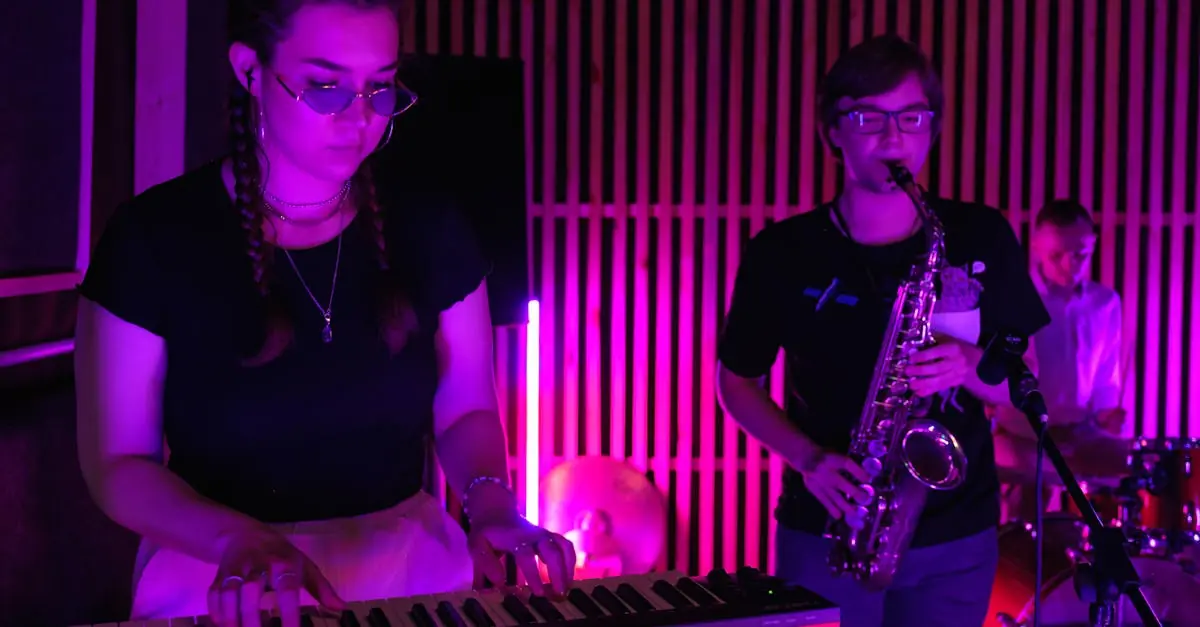In a world where every catchy tune and viral dance craze gets a fresh twist, pop remix culture reigns supreme. It’s the playground where creativity meets nostalgia, and where artists and fans alike remix their favorite tracks into something entirely new. Imagine taking a classic hit and giving it a funky beat or blending genres that never seemed to mesh—this is where the magic happens.
Pop remix culture isn’t just about repackaging songs; it’s a vibrant community that thrives on collaboration, innovation, and a sprinkle of humor. From TikTok challenges to DJ mashups, it’s a lively dance of sound that keeps the music scene fresh and exciting. So buckle up and explore how this dynamic culture has transformed the way we experience music, one remix at a time.
Table of Contents
ToggleOverview of Pop Remix Culture
Pop remix culture serves as a dynamic intersection of nostalgia and innovation within the music industry. Artists take classic hits and infuse them with fresh interpretations, resulting in exciting new versions. Genres blend seamlessly, allowing for creative freedom through various techniques and styles. Fans actively participate in this culture, contributing their own remixes that often go viral on social media platforms like TikTok.
Collaborative efforts characterize this culture, with musicians, producers, and fans working together on projects. Humor often plays a significant role in remixing as well, making light of past hits and inviting listeners to engage in a playful manner. Various subgenres, such as mashups and edits, have emerged, showcasing the depth and versatility of this artistic expression.
Platforms like SoundCloud and YouTube have become vital for sharing remixes, enabling artists to reach broader audiences. Data from recent statistics shows that remixes can outperform original tracks in popularity, indicating their significant impact on music consumption. The relationship between remixes and the original songs often creates a dialogue, enhancing the listener’s experience and understanding of the music.
As technology advances, opportunities for new creation within pop remix culture continue to expand. Accessibility to software and beat-making tools empowers aspiring remixers, allowing them to contribute to the vibrant landscape. By engaging with both classics and contemporary hits, this culture keeps the music scene fresh, ensuring its evolution remains engaging and relevant.
Evolution of Pop Remix Culture
Pop remix culture has transformed over the years, shaped by various influences and technological innovations. Understanding this evolution offers insight into the genre’s growth and enduring appeal.
Early Influences
The 1970s laid groundwork for remix culture with disco and hip-hop’s rise. DJs began manipulating tracks, creating new versions for dance floors. Artists like Kool Herc pioneered sound mixing techniques that laid the foundation for future experiments. These early remixes provided a blueprint for artists wishing to explore genre-blending and creativity. 1980s pop music witnessed the introduction of the 12-inch single format, allowing extended remixes that showcased new sounds. As a result, popular tracks gained fresh interpretations, capturing audiences’ imaginations.
Technological Advancements
The late 1990s brought significant technological advancements, revolutionizing remix culture. Software like Pro Tools made music editing accessible to aspiring artists. Digital audio workstations allowed anyone to create and share remixes easily. The internet also shifted distribution methods, enabling instant access to music globally. Platforms like SoundCloud facilitated a community-driven approach, where fans and artists alike could collaborate and promote their work. Streaming services further changed the landscape, as remixes gained prominence in playlists and charts. Consequently, this digital era empowered both creators and listeners, fostering an environment ripe for experimentation.
Key Characteristics of Pop Remixes
Pop remix culture thrives on creativity and innovation, showcasing various characteristics that define its essence.
Sampling Techniques
Sampling techniques play a crucial role in pop remixes. Artists often borrow snippets from existing songs, allowing them to create new narratives. Famous examples include using hooks from classic tracks, which introduce familiarity. This method enhances listener engagement, making remixes relatable and fresh. Different styles of sampling can include vocal tags, instrumental loops, or iconic beats, drawing from multiple genres. Legally, many artists clear samples, ensuring respectful use. Ultimately, sampling fosters a dialogue between original and remixed songs, enriching the music landscape.
Genre Blending
Genre blending defines pop remixes by merging styles creatively. Artists frequently mix elements of pop, hip-hop, electronic, and rock, among others. Such combinations generate vibrant soundscapes, appealing to diverse audiences. Popular remixes often shift genres, highlighting unexpected influences that captivate listeners. The blending of upbeat rhythms with slower melodies can create unique contrasts, enhancing emotional depth. Artists leverage technology to experiment with genre fusion, redefining traditional boundaries. This adventurous approach keeps music exciting and dynamic, encouraging experimentation among creators and fans alike.
Impact on Music Industry
Pop remix culture significantly influences the music industry. This phenomenon facilitates collaboration between established and emerging artists, reshaping creative landscapes.
Artist Collaborations
Collaborative efforts among artists enhance remix potential. Established filmmakers frequently partner with emerging talent, resulting in vibrant, unexpected sound combinations. Notable examples include the remix collaborations between mainstream artists and independent producers. These partnerships provide exposure for lesser-known musicians, often leading to breakthroughs in popularity. Moreover, shared fan bases create exciting opportunities for discovering new music. Collaborative remixes often feature different vocal interpretations and instrumentation, making them fresh and appealing.
Commercial Success
Commercially, remixes thrive in today’s music market. Statistics reveal remixes outperform original tracks in streaming views, with high-profile remixes charting in the top spots globally. Labels increasingly capitalize on this trend by releasing remixed versions as lead singles or bonus tracks. Audience engagement often boosts commercial success, as fans share their favorite remixes across social media platforms. This marketing strategy not only drives sales but also builds community around music. Additionally, remixes find their way into commercials, movies, and advertising campaigns, further solidifying their place in popular culture.
Pop remix culture stands as a testament to the power of creativity and collaboration in music. It blurs the lines between nostalgia and innovation while inviting fans to actively participate in the artistic process. This vibrant landscape not only enriches the listening experience but also fosters connections among artists and audiences alike. As technology continues to evolve and platforms expand, the potential for remixes to shape the music industry remains limitless. Embracing this culture allows for an ever-changing dialogue that keeps the music scene alive and thriving.



